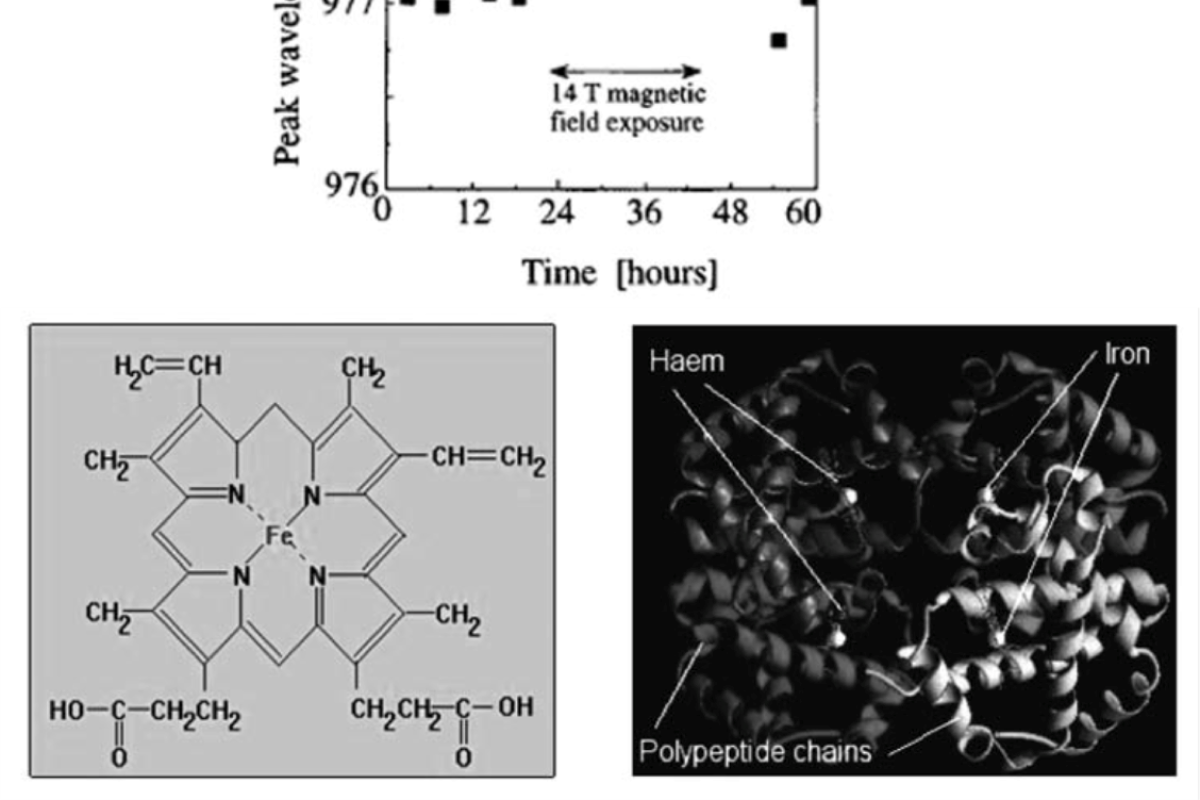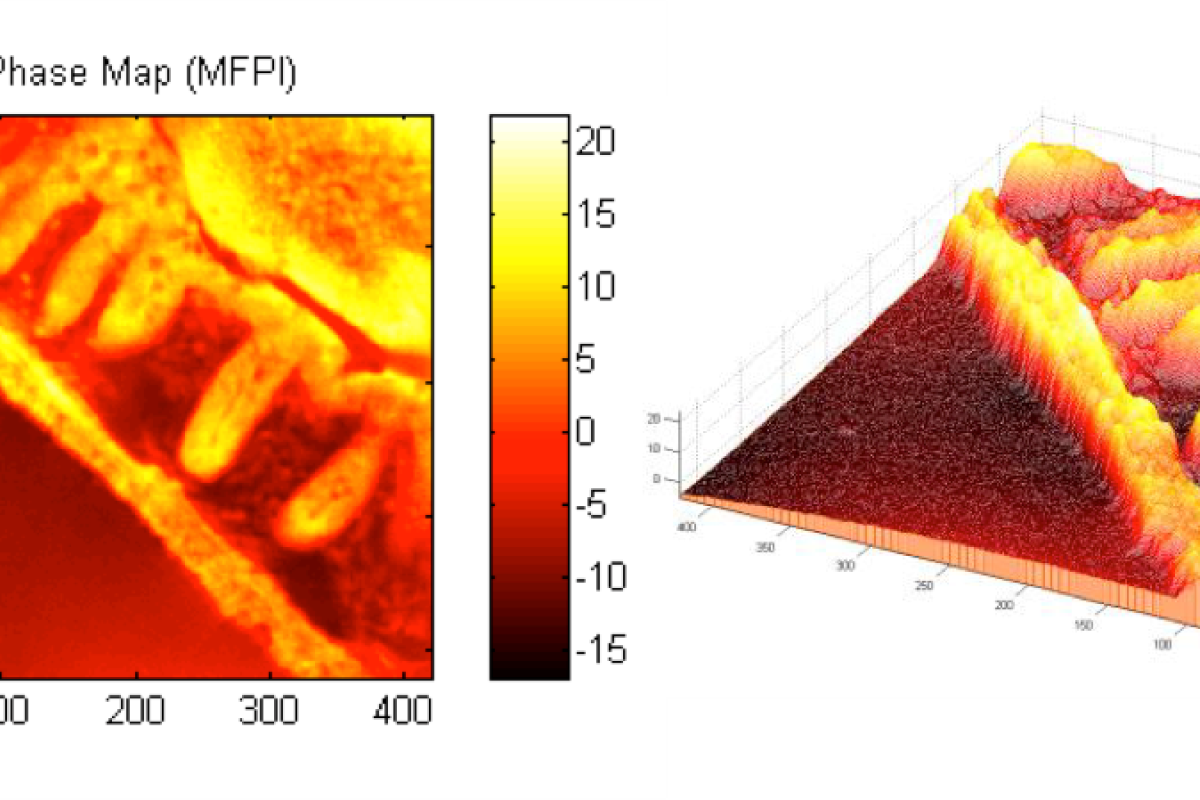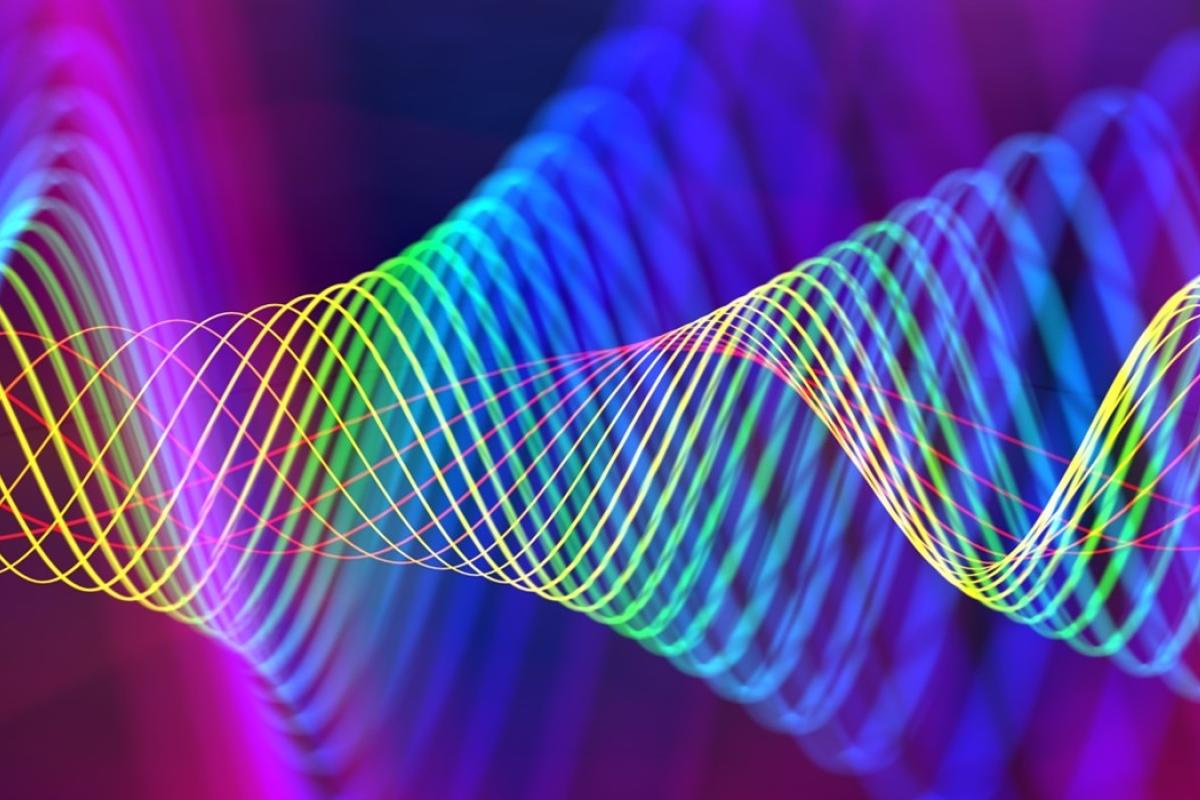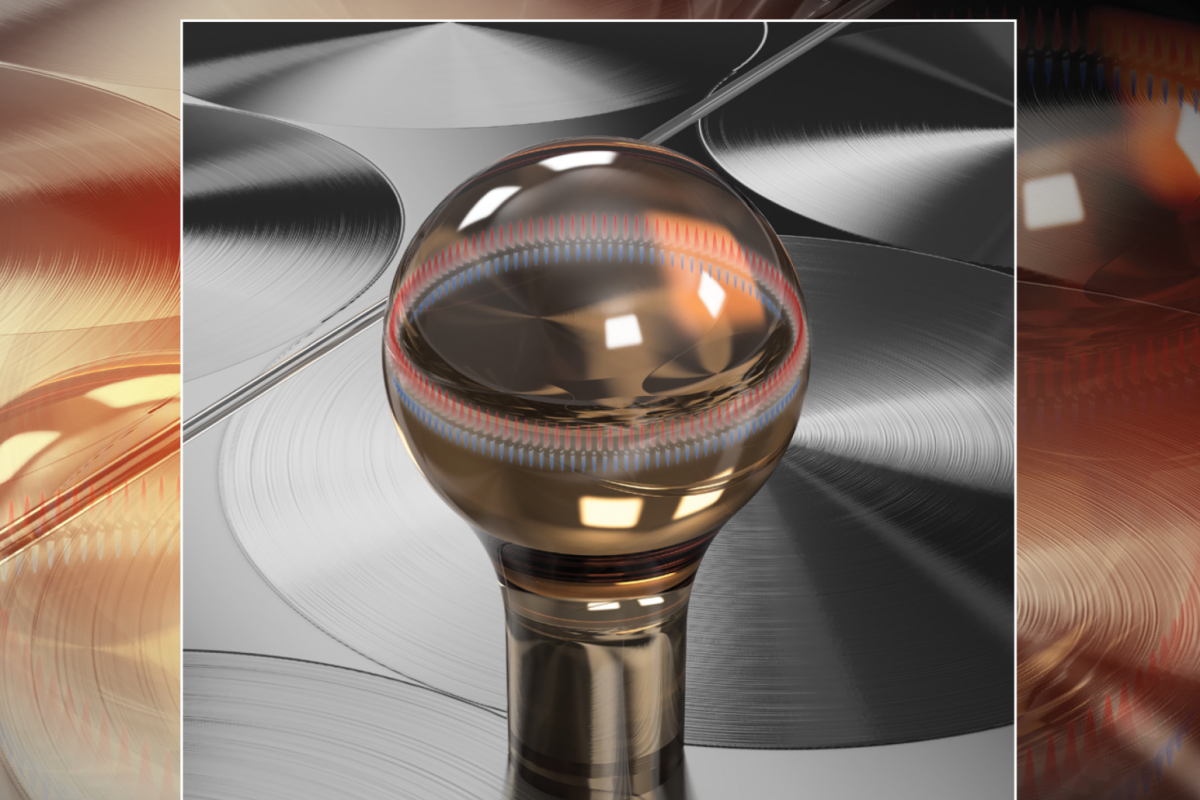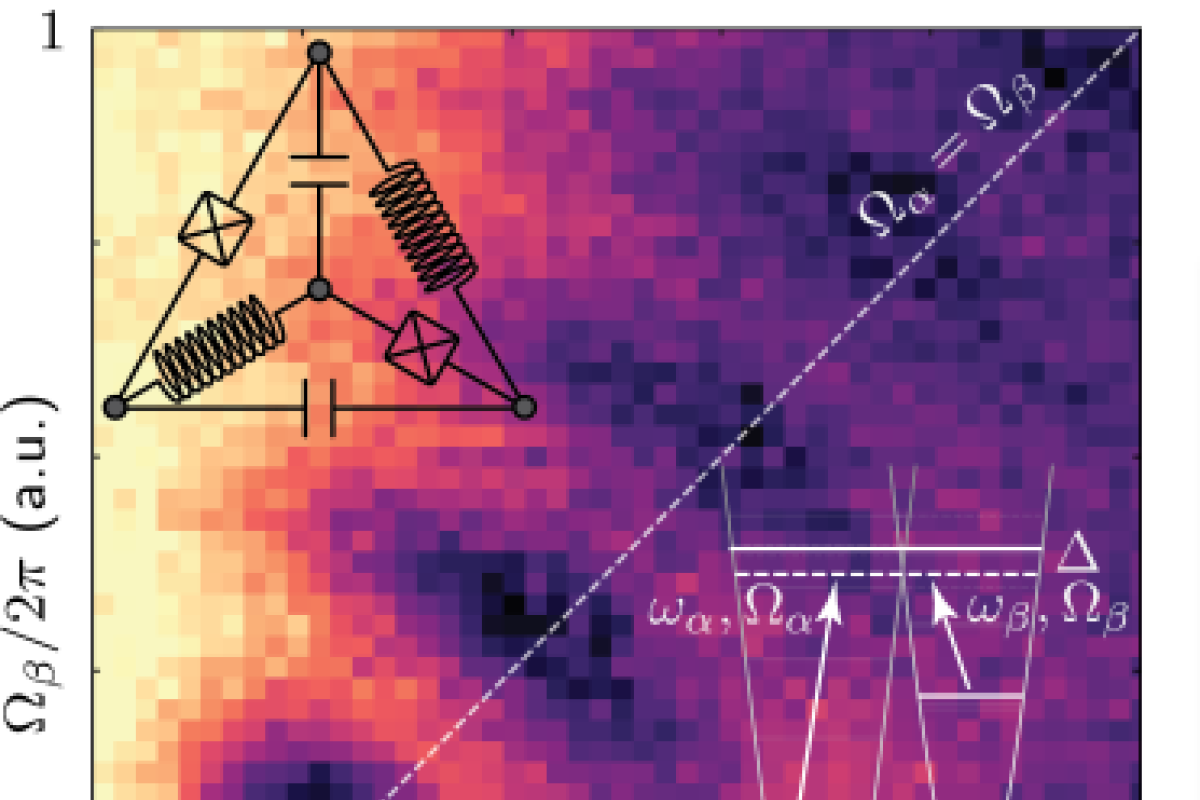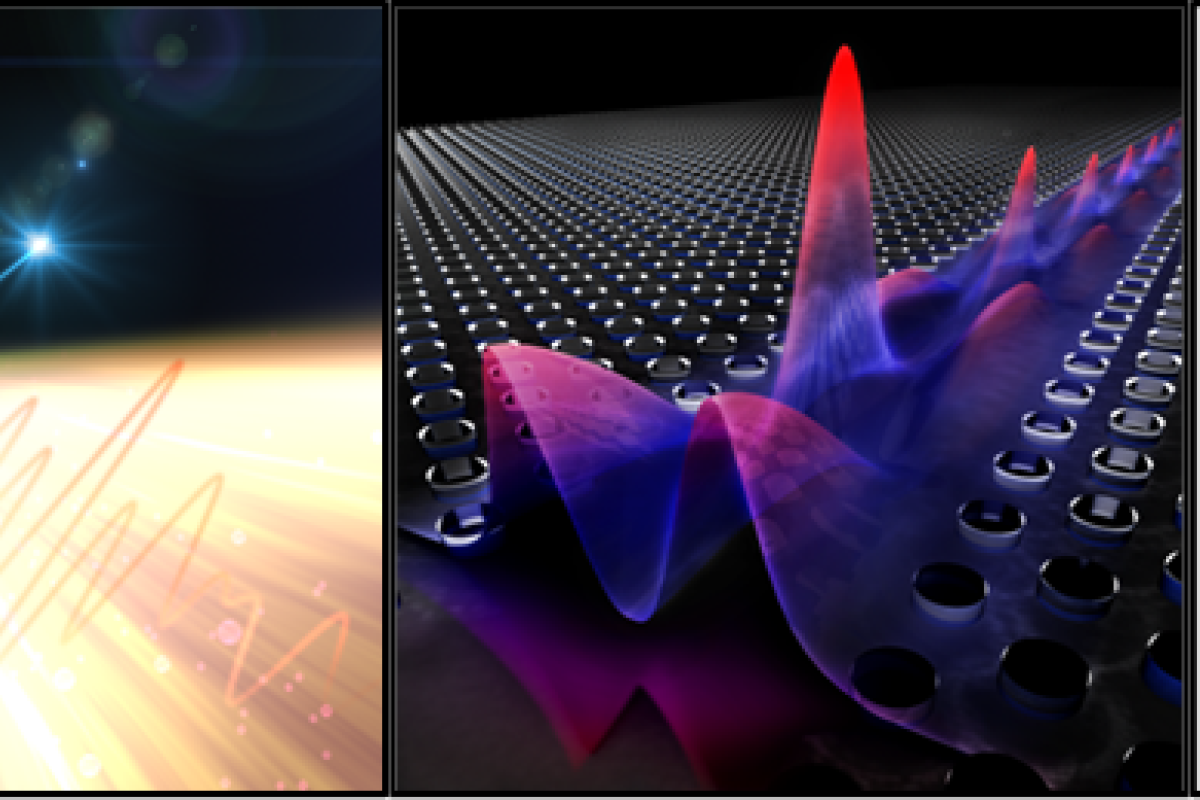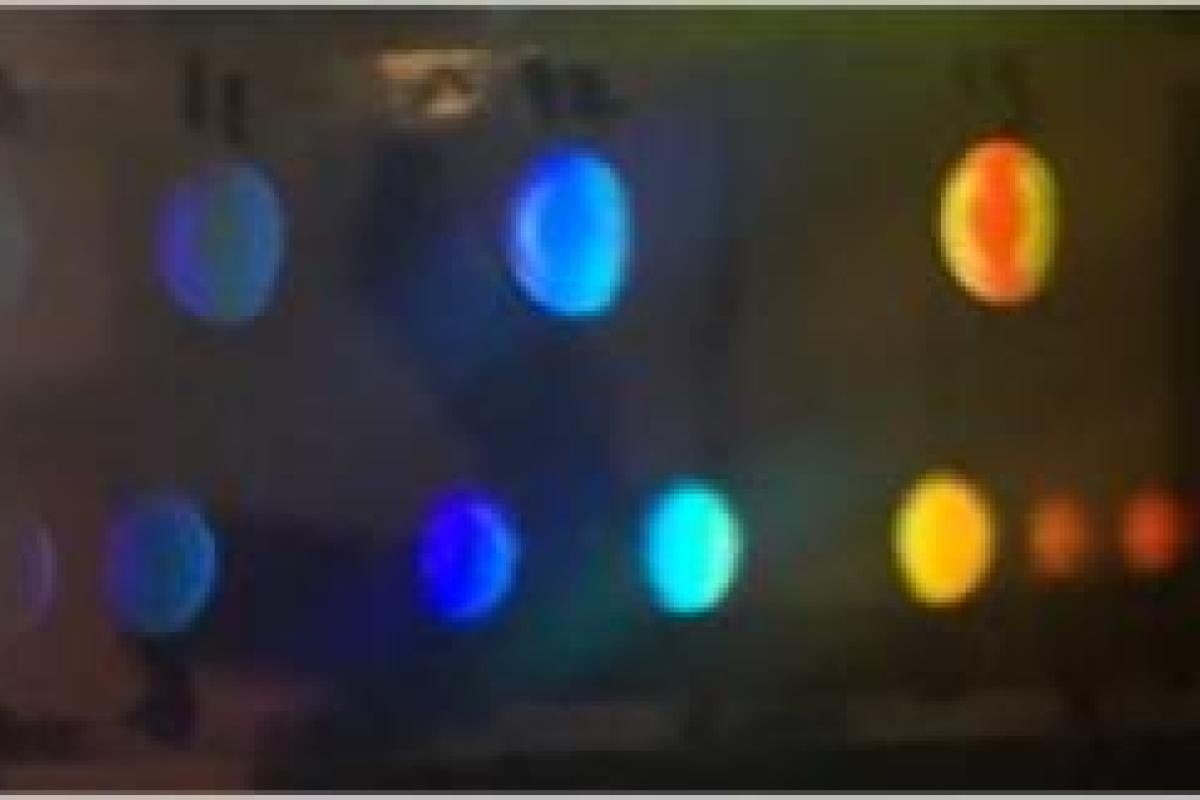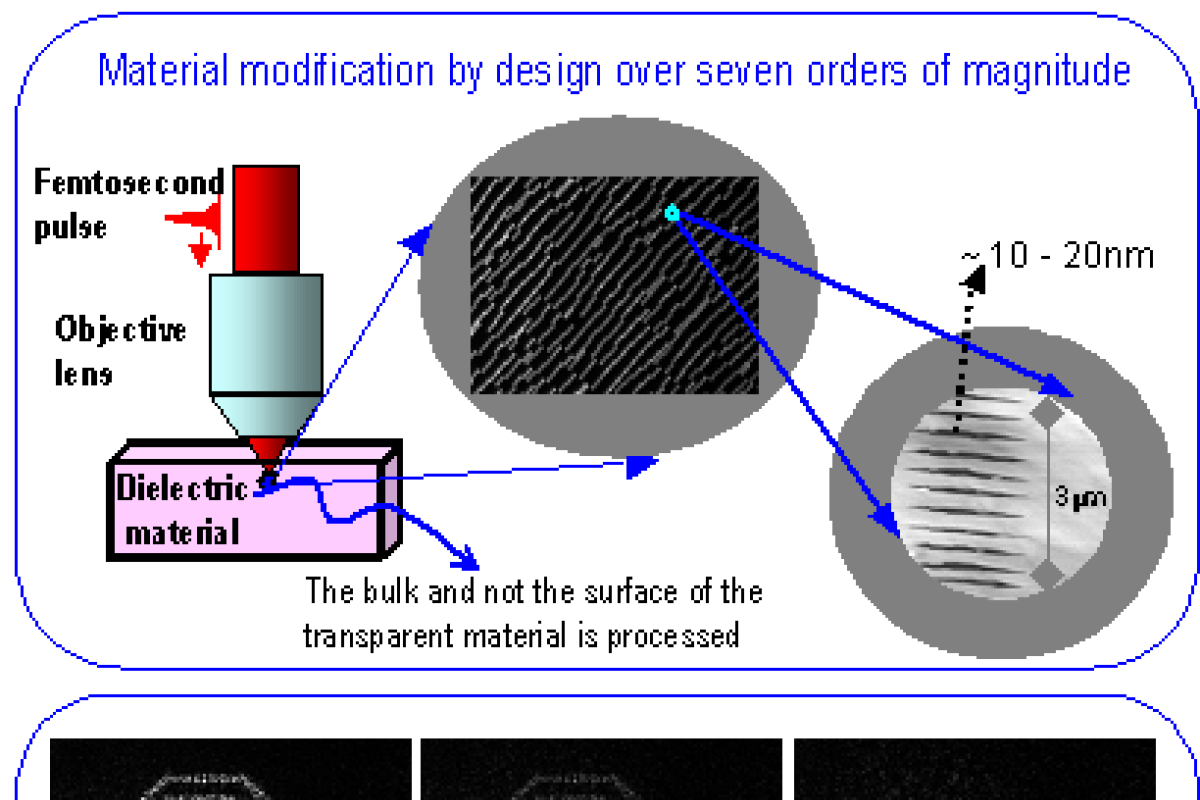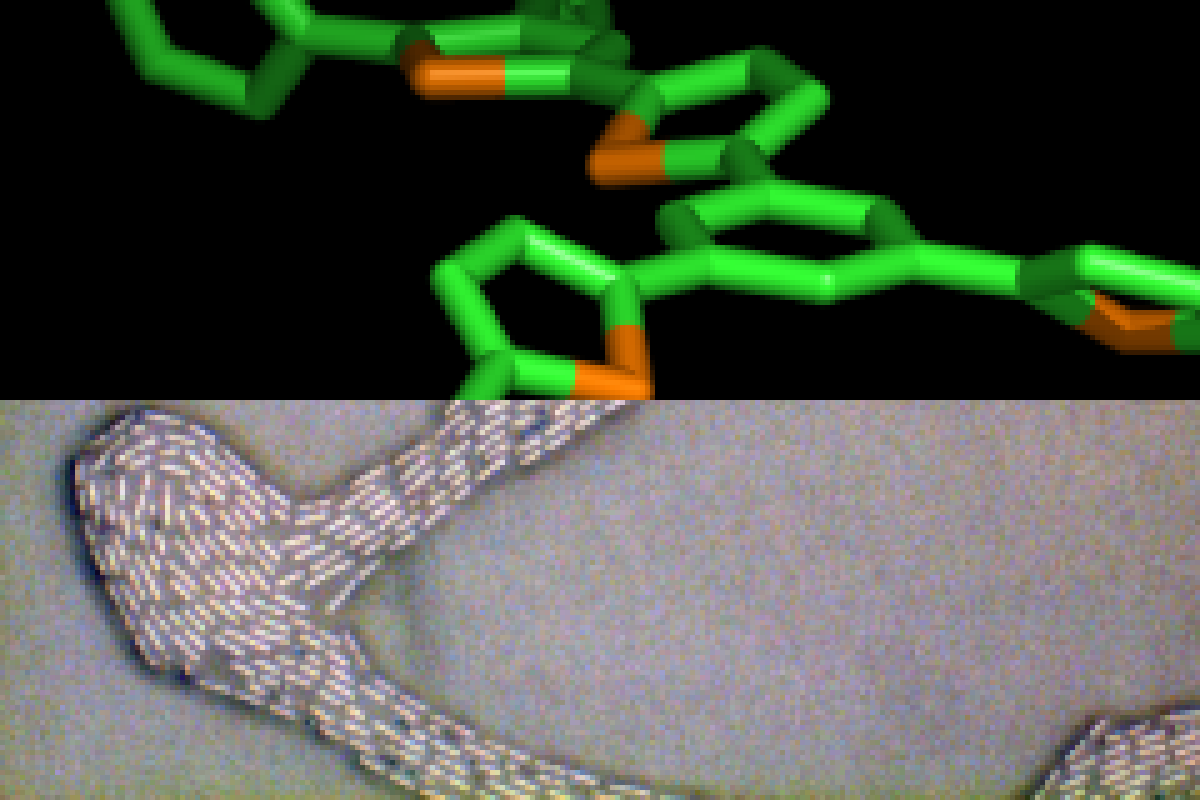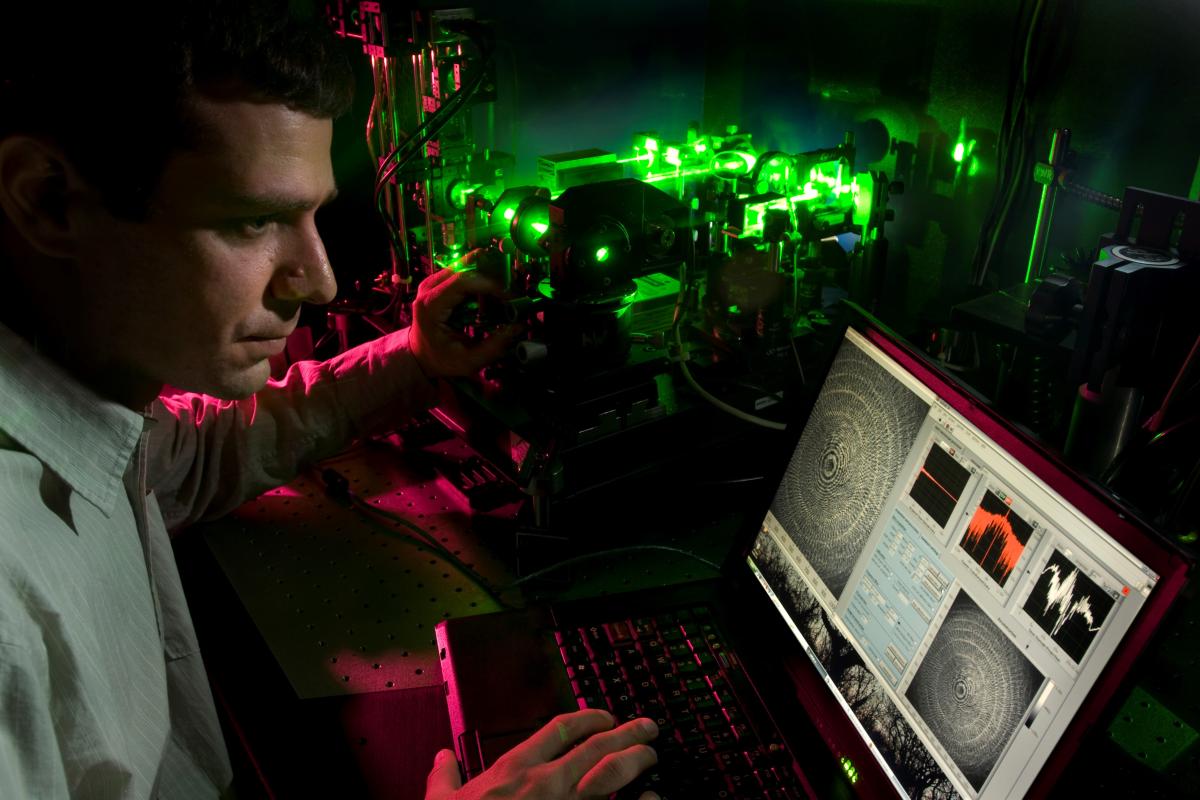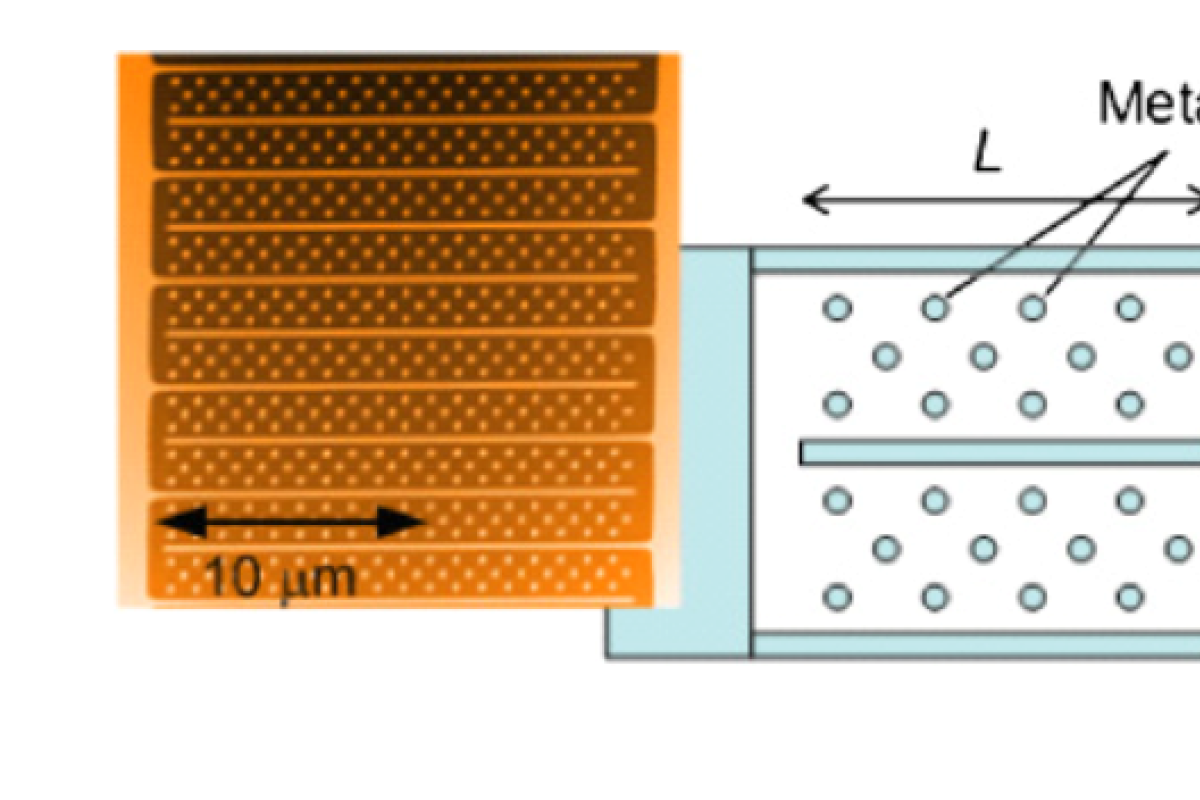Research Groups
The Barnes Group carries out research on bioelectromagnetics, studying the effects of small yet physiological relevant E&M fields present in our everyday environment.
The Cogswell Group Micro Optical Imaging Systems Laboratory (MOISL) conducts research in computational optics, sensing, and imaging (COSI) for biological microscopy systems.
We introduce laser-based quantum metrology tools that lead to new understanding of physical systems and enable technological and scientific breakthroughs. A central theme is the development and application of optical frequency combs for precise synthesis and control of fields across the electromagnetic spectrum.
The Gopinath group works in laser development and applications. Specific interests include ultrafast and high power cw and pulsed lasers, beam combining, mid-infrared sources and materials, spectroscopy of semiconductors, membranes, and other new materials, rare-earth doped media, micro- and optofluidics, and orbital angular momentum of light.
We are a research lab focusing on developing new types of hybrid superconducting and semiconducting qubits with the goal to enhance the lifetime of these artificial atoms. Our projects are at the intersection of quantum material science and quantum information science.
Shu-Wei Huang's group studies novel ultrafast nonlinear dynamics in photonic structures, and incorporates the dynamics to enhance the device performances with focuses on sensing and imaging applications.
Our research is at the interface of optics and materials science. We create new photoresponsive materials, typically polymers, to address important problems in regenerative medicine, lithography and bio-optics.
We work on developing photonic devices using nanoscale materials and conduct extensive numerical modeling, synthesis and fabrication of nanostructures and optical characterizations to demonstrate novel optical phenomena.
The research in the Piestun group deals with the control and processing of optical radiation at two significant spatial and temporal scales, the nanometer and the femtosecond.
We carry out research in a variety of areas aimed at advancing solar energy harvesting devices, developing new optoelectronic materials and devices, and studying fundamental processes in biological systems.
The Wagner Group (KAOS) develops systems and devices for optical information processing and multidimensional signal processing utilizing coherent and nonlinear optics utilizing both ultrafast and ultrastable lasers for demanding applications such as true-time-delay RF antenna array beamforming and computational imaging using dynamic structured light for Fourier telescopy and microscopy.
A major application area for our research has been in RF photonic signal processing for microwave imaging, target recognition, squint-free adaptive beamforming and jammer nulling for advanced radar systems. We also utilize stabilized tunable lasers to address spectral-hole-burning materials in order to record spatial-spectral holography for multidimensional signal processing applications, including dispersion compensation and modal demultiplexing for spatially multimode fiber optic communication systems. Ultrafast and supercontinuum lasers are utilized for nonlinear optics and multiwavelength optical processing systems exploting the vast optical bandwidth throughout the visible and IR as an additional computational resource. And finally, novel approaches to acousto-optic devices, physics, and systems are being developed for applications in quantum computing, dual-comb spectroscopy, laser stabilization, true-time delay beamforming, as well as dynamic structured light computational imaging for Fourier telescopy and microscopy.
The Van Zeghbroeck group focuses on semiconductor device research, including growth and characterization of graphene-based devices, nano-structured Metal-Semiconductor-Metal photodetectors, modeling and simulation of AlGaAs/GaAs QW DBR silicon dual junction photovoltaic devices, and fabrication and characterization of GaAsBi heterojunction bipolar transistors.


